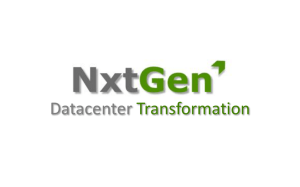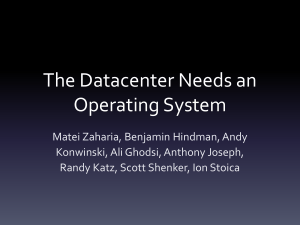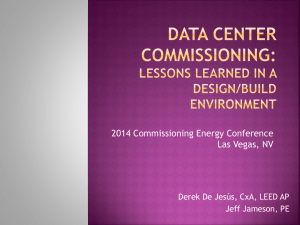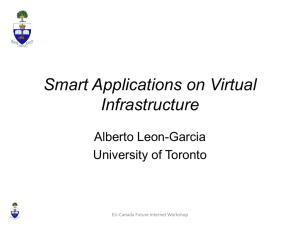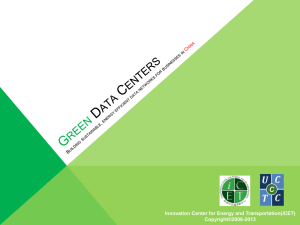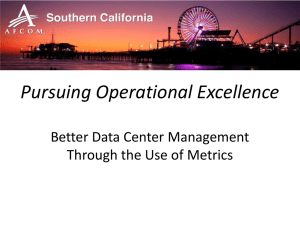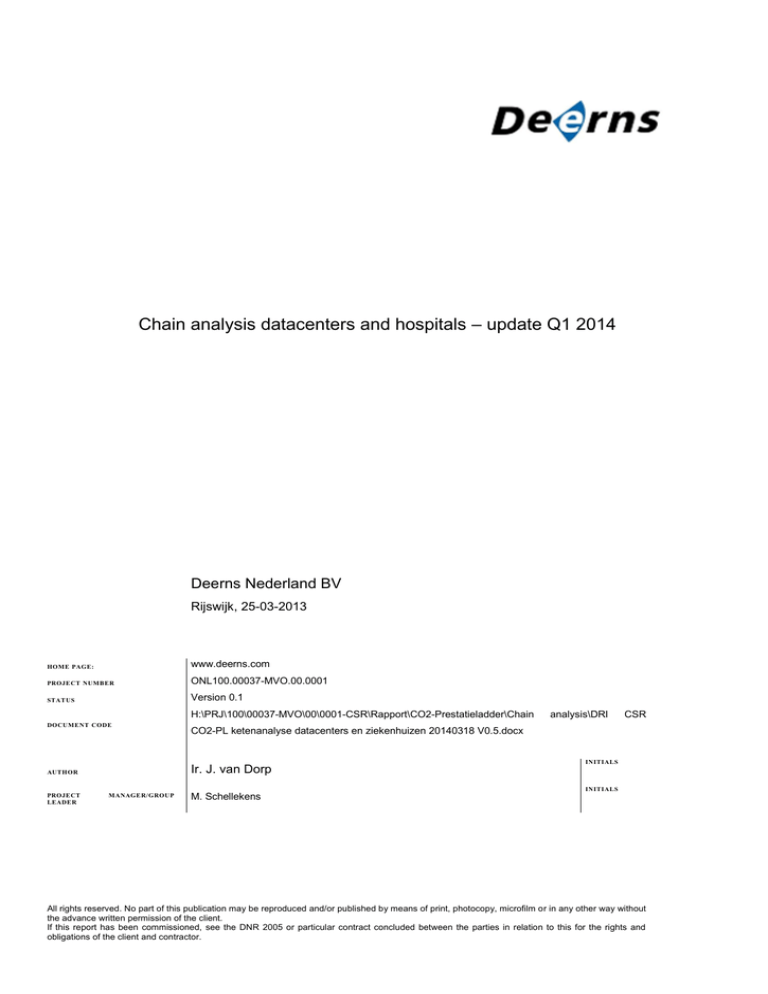
Chain analysis datacenters and hospitals – update Q1 2014
Deerns Nederland BV
Rijswijk, 25-03-2013
HOME PAGE:
www.deerns.com
PROJECT NUMBER
ONL100.00037-MVO.00.0001
STATUS
Version 0.1
H:\PRJ\100\00037-MVO\00\0001-CSR\Rapport\CO2-Prestatieladder\Chain
DOCUMENT CODE
Ir. J. van Dorp
AUTHOR
analysis\DRI
CSR
CO2-PL ketenanalyse datacenters en ziekenhuizen 20140318 V0.5.docx
INITIALS
INITIALS
PROJECT
LEADER
MANAGER/GROUP
M. Schellekens
All rights reserved. No part of this publication may be reproduced and/or published by means of print, photocopy, microfilm or in any other way without
the advance written permission of the client.
If this report has been commissioned, see the DNR 2005 or particular contract concluded between the parties in relation to this for the rights and
obligations of the client and contractor.
2
Contents
1.
INTRODUCTION............................................................................................................ 3
2.
SCOPE 3 CHAIN ANALYSIS......................................................................................... 4
2.1.
Datacenters ............................................................................................................................... 4
2.1.1.
Targets ...................................................................................................................................... 4
2.1.2.
Information supplied ................................................................................................................ 4
2.1.3.
Assumptions ............................................................................................................................. 4
2.1.4.
Results + findings ...................................................................................................................... 4
2.2.
Hospitals .................................................................................................................................... 5
2.2.1.
Targets ...................................................................................................................................... 5
2.2.2.
Information supplied ................................................................................................................ 5
3.
VERIFICATION .............................................................................................................. 6
3.1.
Validation of source data and outcomes - datacentres .............................................................. 6
4.
REFLECTION .................................................................................................................. 6
4.1.
Quality of source data and insight - datacenters ........................................................................ 6
4.2.
Forecast for realising the targets - datacenters .......................................................................... 6
5.
PROPOSALS FOR IMPROVEMENT .......................................................................... 7
5.1.
Reformulation of target - datacenters ....................................................................................... 7
3
Fout! Onbekende naam voor documenteigenschap.
1.
INTRODUCTION
In order to qualify for maintenance of the CO2-prestatieladder certificate, a regular update of
progress on achieving co2 reduction targets at datacenters and hospitals is undertaken. This
report provides information on this progress.
4
Fout! Onbekende naam voor documenteigenschap.
2.
SCOPE 3 CHAIN ANALYSIS
2.1.
Datacenters
Datacentre can be characterised by their PUE, or power usage efficiency. As the PUE approaches unity, the energy use for auxiliary systems is reduced and the overall efficiency of the
datacentre improves. Datacenters with a low PUE have lower associated co2 emissions.
2.1.1.
Targets
A quantitative target is difficult to define for this sector, because the design of efficient datacenters rests on many individual technical solutions and their integration, and the resulting efficiency of a datacenter is largely dependent on the ambition (and available budget) of the owner.
However, a quantitative target was defined, as follows.
-
Deerns will endeavor to realize an EUE of <1,2 for all its datacenter projects.
-
Deerns will try to convince all its datacenter clients to procure co2-free energy if possible, or otherwise to compensate by purchasing renewable energy certificates.
-
Deerns will try to convince all its datacenter clients to install “Sustainable solar PV installations” on the roofs of their datacenters. Sustainable solar PV installations are PV
installations having an EROI (Energy returned on energy invested) of at least 10.
Information regarding Deerns datacenter projects will be published.
2.1.2.
2.1.3.
Information supplied
Project
Site power rating
PUE
PV
Bist Datacenter Istanbul Stock Exchange
800 kW
PUE 1,3
nee
Bist Datacenter Istanbul Stock Exchange
6,0 MW
PUE 1,3
nee
Global Switch
1,1 MW
PUE 1,3
nee
Moskou Energy Company
750 kW
PUE 1,2
nee
Buckingham
32 MW
PUE 1,1
nee
Assumptions
No assumptions are necessary.
2.1.4.
Results + findings
The results show that the PUE target of 1,2 or better was only achieved at two datacentre
projects. The average PUE on a per project basis was 1,24. The average PUE weighted for
project installed electric capacity was 1,14. A PV installation was not installed at any of the
projects.
5
Fout! Onbekende naam voor documenteigenschap.
It is not clear whether Deerns has advised the datacenters to install PV panels, as this was not
monitored.
2.2.
Hospitals
Hospitals are significant users of energy, including energy for powering indoor climate control.
Deerns has a lot of experience in designing climate control systems which make use of ATES
(Aquifer Thermal Energy Storage). In most of Deerns hospital projects, ATES technology is
implemented. Because hospitals generally have year-round demand for cooling and heating,
the economics of using ATES are generally favourable.
2.2.1.
Targets
Deerns does around three hospital projects per year, including both new-build and renovation.
Deerns’ target is to include ATES in every hospital project, unless the local geology precludes
the application of ATES.
2.2.2.
Information supplied
Information has not been retrieved.
6
Fout! Onbekende naam voor documenteigenschap.
3.
VERIFICATION
3.1.
Validation of source data and outcomes - datacentres
The data has been collected and verified through the manager in charge of datacentre projects.
The data pertaining to whether or not Deerns has advised the installation of PV technology at
the datacenters was not available.
4.
REFLECTION
4.1.
Quality of source data and insight - datacenters
The information regarding whether PV installations were advised by Deerns was not available at
the time this update report was written. This information will be sought and added in a future
update report.
4.2.
Forecast for realising the targets - datacenters
The achievement of a PUE of 1,2 was not reached in all projects, but the weighted average
PUE across projects was lower than 1,2. In relation to the objectives, this counts as a partial
achievement. In future datacentre projects, achievement of a PUE of <1,2 will continue to be the
target. There is high confidence that this target will be met.
Concerning the target of using waste heat, there is medium confidence. There is enthousiasm
among datacentre owners to do more with waste heat, but the logistics and cost issues pose a
challenge. Succes in reaching this target will depend on the availability of funds, either from
owners of datacenters or through subsidies.
7
Fout! Onbekende naam voor documenteigenschap.
5.
PROPOSALS FOR IMPROVEMENT
5.1.
Reformulation of target - datacenters
The application of PV technology at datacenters is found to be relatively difficult. Installing PV
introduces risks in relation to fire protection and power quality, which are critical factors especially for datacentres. To mitigate these risks by adding power electronics and fire safety precautions, additional costs are incurred which further undermine the already poor economics of
rooftop solar PV on energy intensive buildings which pay relatively low rates per kWh of electricity usage.
In relation to the aforementioned issues, the target of increasing PV deployment at datacenters
will be dropped. Instead, a new target will be formulated in support of using waste heat from
datacentre operations. The waste heat could be used to supply heat for space heating, in combination with a heat pump. The new target will be that Deerns advises at least one new datacentre project which includes the capability to supply waste heat to third parties.


